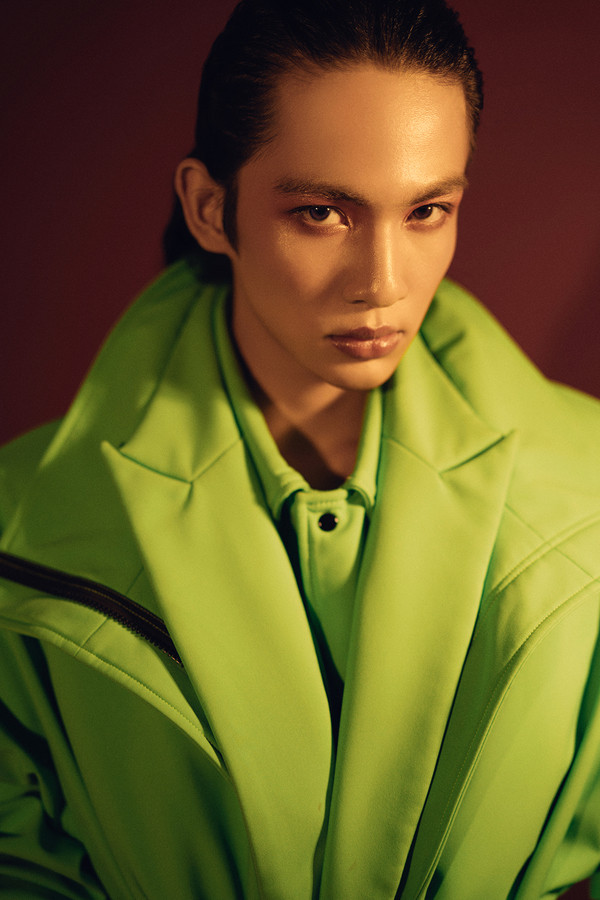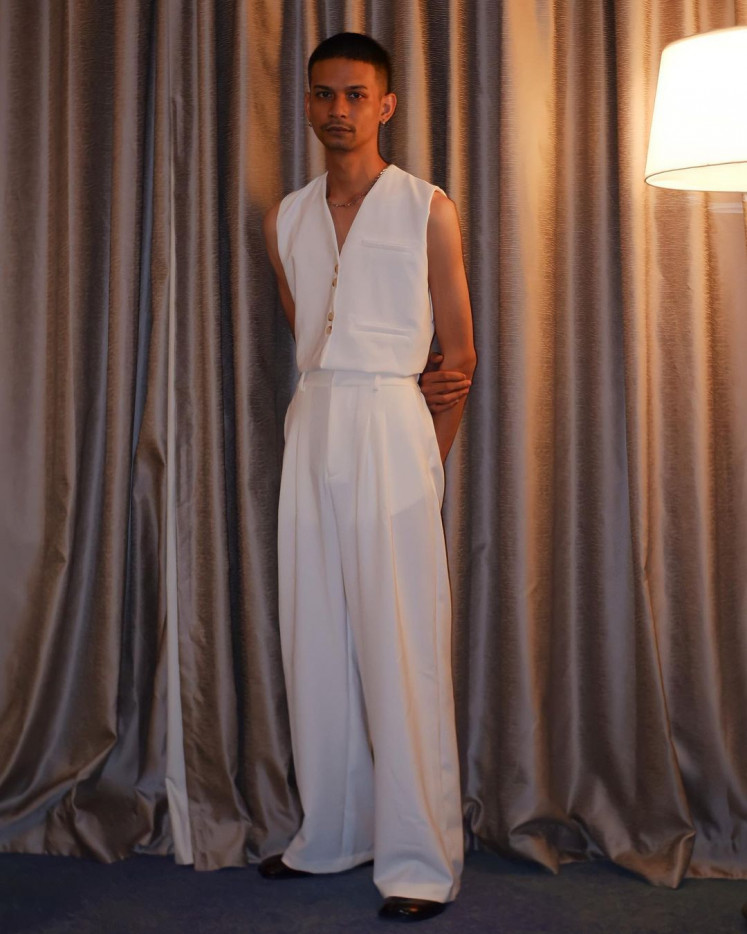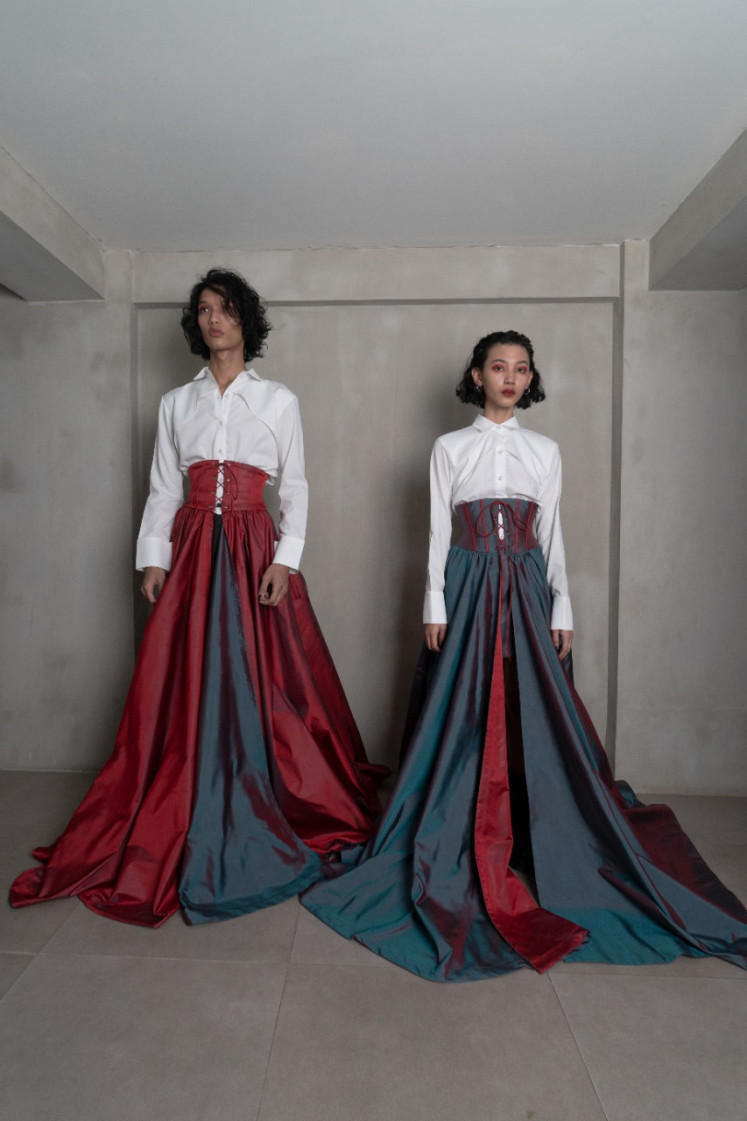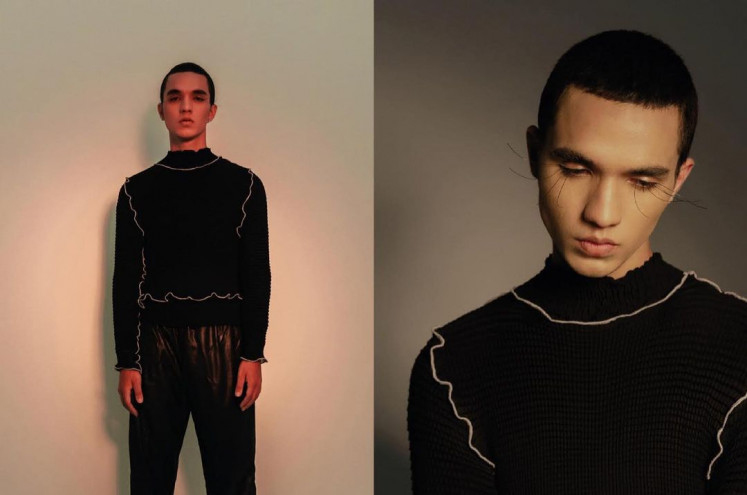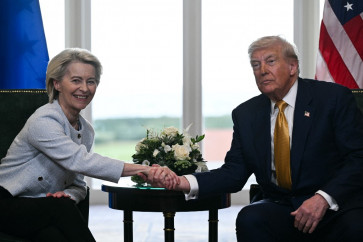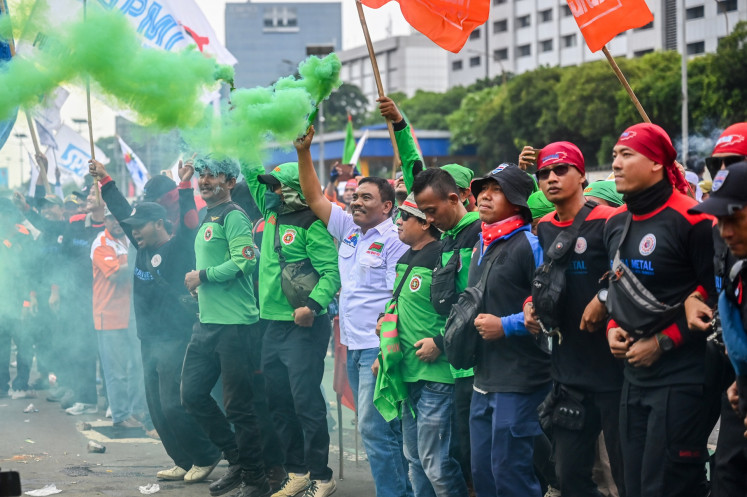Popular Reads
Top Results
Can't find what you're looking for?
View all search resultsPopular Reads
Top Results
Can't find what you're looking for?
View all search resultsGenderless is the future of fashion
As the gender distinction in fashion blurs, we sat down with some of the people in the industry to talk about its future.
Change text size
Gift Premium Articles
to Anyone
W
hen Patti Smith wore a men’s shirt with a jacket slung over her shoulder for the cover of Horses in 1975, it shifted perceptions. When Kurt Cobain performed in dresses in the 1990s, it challenged notions of masculinity. Decades later, when countless figures and designers have pushed the discourse of dressing without the confinement of gender limitations further, is the idea still as radical as it once was?
Today more than ever, brands and customers are veering toward genderless dressing. While it has not reached the point of normalcy yet, more and more people are becoming more open in embracing being free when it comes to how they dress.
Chloe Clau, 29, is a model known for fluid looks. She often presents looks that are either feminine, masculine, or in-between. The aspect that interests her in fashion is exploring the presentation of oneself without being boxed in. In her daily life, she often wears casual boyish clothes, which sometimes seep into her professional work. While she recognizes that for women, wearing men’s clothes has always been more accepted, she noticed that in the last six years, the local fashion industry and society at large had become more accepting of androgynous styles. Regarding the distinction between menswear and womenswear, Chloe said it was likely to exist for the foreseeable future. The conscious choice to look past the labeling, however, will be increasingly more prevalent.
Turning heads: Dodi wearing Rani Hatta in Persona's PERWIRA 2021 campaign. (Dodi/Courtesy of Tjhan Reno/Persona Management)Model and history student Dodi, 20, has been interested in fashion since high school. He often watched runway shows in his free time, which culminated in him wanting to study fashion design before opting for history instead. Since he couldn’t become a designer, being a model is a way for him to still pursue a career in fashion. Like Chloe, Dodi is known for his fluid looks that veer between masculine and feminine. He started to explore the idea of expressing himself more freely since the start of university, when he was able to let his hair grow long. Presently, he works with a whole range of clients, from fashion labels to cosmetic brands.
For social media marketer and fashion content creator Alessandro Georgie ,28, his foray into exploring womenswear was caused by necessity. Since he has a size 26 waist, he often has to look for pants in the women’s section. From those experiences, he found that a lot of womenswear items actually look good on men. Today, almost half of his clothes come from womenswear labels. Observing the shifts within the fashion industry from a consumer and business standpoint, he believes that genderless fashion should be the future of global fashion retail. “The pandemic showed us that seasonal collections are kind of wasteful and becoming irrelevant. Aside from the importance of inclusivity, without the distinctions of a male and female line, a label’s business would be more sustainable and practical,” he remarked.
Genderless: Alessandro wearing pieces from Tanah Le Saé, Avgal, and Y/Project (Alessandro Georgie/Courtesy of Alessandro Georgie)Alessandro himself grew up in a family environment that has always been appreciative of fashion, so the interest came naturally to him. He started making content on TikTok on a whim since he began working from home last year, putting together outfits as he started his days. Today, he has a following of more than 13,000 followers on Instagram and more than 135,000 on TikTok, where he often posts his outfits and styling explorations—including mixing both menswear and womenswear pieces to his outfits. Fittingly, some of his favorite labels are those that push boundaries in terms of their designs, such as the Paris-based Y/Project and Maison Margiela under John Galliano. What he wants to see more from the local fashion industry is brands taking on a similar approach to the blurring of gender distinction.
Behind the labels
One Off Ones is a Jakarta-based independent genderless fashion brand founded by Angela Rachel, 24, in 2021 after graduating from Istituto Marangoni, London and working with a number of notable designers such as JW Anderson and Molly Goddard. Their first collection was launched in February, with the idea to present a radically different image of masculinity in femininity and vice versa, defying gender barriers to propose a progressive non-binary vision of what fashion should be, as envisioned by the founder and designer Angela.
Angela developed an interest in fashion as early as when she was only 5 years old, where she spent most of her time playing with Barbie dolls, mixing and matching their clothes as well as drawing clothes that she wanted to put on them. As she grew older, she began drawing clothes that she wanted to wear herself. Her interest in exploring genderless fashion started back on her second year of university, where fashion design students had to make the decision on which course they are going to take; womenswear or menswear. At that time, she was very torn as she wanted to explore both sides. It got her into thinking about why clothes have to be categorized by gender when it's just pieces of fabric. Since then, she always wanted to defy gender barriers on clothing, making all types of garments accessible to all genders.
Style for everyone: Dodi in YSA Reworks and arrin for Mordant Magazine. (Dodi/Courtesy of Melvie Aurelia/Persona Management)Another young label that is defying gender norms is SAAMR Studio, founded in 2020 by content developer Saadiah Adzani, 32, and makeup artist/fashion stylist Marsha D Martha ,34. In their debut collection, the Bandung-based brand presented neutral looks that are designed with the human body in mind, regardless of gender. The brand focuses on the experimentation of different fabrics and materials—inspired by creating movements on different fabric textures to “enhance” the body.
On the subject of whether the subversiveness of dressing against one’s perceived gender still holds weight, they feel that it still does due to the factor that for the Indonesian society, the idea is still somewhat of a taboo, so it will take a while for it to sink in the norm. What matters most for them, however, is the comfort and confidence a piece of clothing can bring to its wearer.
The future is genderless
The one thing that everyone agreed on is that the younger generation is more open to the idea of a genderless future in fashion. “I see more guys being flexible and confident in dressing outside of the norm, especially within my age group,” said Dodi of what he personally sees around him. Of the phenomenon, Chloe said, “In the past, people were more limited in seeing the world. With the internet and social media today, people will naturally be more exposed and open to new ideas.”
Luminous black: Waffle top from SAAMR Studio's debut collection worn by model Justin Matula. (SAAMR Studio/Courtesy of Lenny Han/SAAMR Studio)Another aspect to fashion that is predicted to grow is inclusivity, which goes beyond gender but also in regards to race and sizes. On what it means for them, SAAMR Studio said it encompassed “Equal opportunity and rights, freedom, to be comfortable with your own body, to not feel excluded from the norm, being diverse, to be valued regardless of your differences.” Beyond its utilitarian function, Chloe, Dodi and Alessandro believe that fashion is a way of appreciating oneself and others, as well as a means of self-expression. “I do believe that there is no one way of dressing, that the gender-fluid way of dressing has its appeal in the open-ended possibilities that it generates. [However] I [also] think that the conscious choice of wearing strictly feminine pieces or vice versa is equally gender-fluid as that of wearing pieces that are dispersed throughout the feminine-masculine spectrum. In the end, it's about what you feel comfortable in and expressing yourself freely with no judgment,” concluded Angela.


